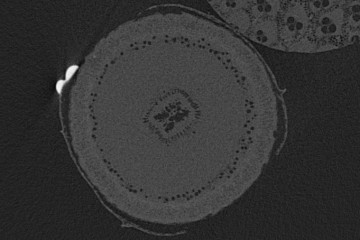it’s been rather quiet in the blog lately, so i thought i’d share a peek into what we’ve been up to at work:
Hydraulic vulnerability analysis using X-ray microCT
 One of the major points of critique for hydraulic measurements of xylem vulnerability and embolism is that they are destructive measurements. In contrast, non-invasive imaging has made it possible to observe xylem function and the spread of embolism in living, intact plants without destructive sampling and associated artefacts.
One of the major points of critique for hydraulic measurements of xylem vulnerability and embolism is that they are destructive measurements. In contrast, non-invasive imaging has made it possible to observe xylem function and the spread of embolism in living, intact plants without destructive sampling and associated artefacts.
In collaboration with Iain Young and Richard Flavel at the University of New England, Armidale, we recently scanned the stems of young Eucalyptus trees at high resolution using X-ray Micro Computed Tomography (microCT) to visualize the loss of hydraulic function at increasing levels of drought. This allowed us to analyse the species’ vulnerability to drought-induced embolism, and validate hydraulic data using an independent, non-destructive method.
In the above image, you can see the cross section of a Eucalyptus stem in which air-filled areas appear darker than water-saturated tissues. From the centre outwards, you can see the central pith and primary xylem, followed by a ring of embolised vessels in the outer xylem area.
The outermost light-grey lines are peeling strips of bark with a marker spot (white), and the top right of the image shows part of the bamboo rod that stabilized the plant in the scanner.
(this article was originally published by myself at choatlab.net)